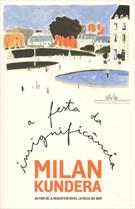
Reworking of Paul Gavarni’s Le Flâneur by Spenot.
Little things in life supplant the “great events.” —Peter Altenberg, as translated by Peter Wortsman
The figure of the flâneur—the stroller, the passionate wanderer emblematic of nineteenth-century French literary culture—has always been essentially timeless; he removes himself from the world while he stands astride its heart. When Walter Benjamin brought Baudelaire’s conception of the flâneur into the academy, he marked the idea as an essential part of our ideas of modernism and urbanism. For Benjamin, in his critical examinations of Baudelaire’s work, the flâneur heralded an incisive analysis of modernity, perhaps because of his connotations: “[the flâneur] was a figure of the modern artist-poet, a figure keenly aware of the bustle of modern life, an amateur detective and investigator of the city, but also a sign of the alienation of the city and of capitalism,” as a 2004 article in the American Historical Review put it. Since Benjamin, the academic establishment has used the flâneur as a vehicle for the examination of the conditions of modernity—urban life, alienation, class tensions, and the like.
In the ensuing decades, however, the idea of flânerie as a desirable lifetsyle has fallen out of favor, due to some arcane combination of increasing productivity—hello, fruits of the Industrial Revolution!—and the modern horror at the thought of doing absolutely nothing. (See: Michael Jordan’s “retirements.”) But as we grow inexorably busier—due in large part to the influence of technology—might flânerie be due for a revival?
If contemporary literature is any indication, the answer is a soft yes. Take Teju Cole’s debut novel, Open City. Cole’s narrator, Julius, wanders up and down Manhattan, across the Atlantic to Brussels and back again, while off-handedly delivering bits of wisdom and historical insight. It’s not just that Open City is beautifully written, though that’s certainly true. Cole’s skill manifests itself in depicting the dreamy psychogeographic landscape—and accompanying amorality and solipsism—of Julius’s mind. Riding behind his eyes is a trip; even though we’re in his head, the tone of his thoughts still sets us at a distance.
Tao Lin’s recently released Taipei achieves something similar. As Ian Sansom wrote in the Guardian, “Passage after passage in the novel dwells on the meaning of disassociation and self-exile.” Examining the author himself yields a similar assessment, and Lin’s often-tortured relationship with technology means he’s broadcasting at all hours, day and night.
The idea here—of dissociating from one’s surroundings, of taking a step back—is important. Thanks to Open City and Taipei, I feel encouraged to pursue flânerie; I’m walking more, finding myself in secondhand stores or by the pier, in tea houses and dive bars—these little things do seem to matter, not least as an effective antidote to artificial busyness and its accompanying stress.
I recently attended a small breakfast panel with Eric Schmidt, the executive chairman of Google, and Jared Cohen, the director of Google Ideas. As the guests were mostly tech CEOs, our meal was analog, delicious, and free—or, at least, paid for by somebody who may or may not have been on the penthouse floor with us. I was overwhelmed by their titles, I confess; all I know for sure is that the bar was open, and that coffee was flowing freely.
Together, Cohen and Schmidt have published a book entitled The New Digital Age: Reshaping the Future of People, Nations, and Business, which attempts to answer the questions our global technological future will ask of us. For Cohen and Schmidt, the book’s futurology makes sense—after all, they’re set to play a large role in developing what comes next. We sat at a long, rectangular table, much like Da Vinci’s in The Last Supper: Schmidt was in the middle, our prophet in more ways than one, while Cohen sat beside him, either Thomas or John, depending on your perspective.
From their book:
The internet is among the few things humans have built that they don’t truly understand … [It] is the largest experiment involving anarchy in history. Hundreds of millions of people are, each minute, creating and consuming an untold amount of digital content in an online world that is not truly bound by terrestrial laws … This is the Internet, the world’s largest ungoverned space.
What might Open City’s Julius make of that? A New York Times opinion piecepublished last February by Evgeny Morozov, a Belarusian technology writer, sees it as a death knell; he waxes nostalgic about the early days of the Web, comparing the evolution of the Internet to Baron Haussmann’s violent reconfiguration of Paris. “Transcending its original playful identity,” Morozov writes, “[the Internet is] no longer a place for strolling—it’s a place for getting things done.”
I agree, in a sense: corporations like Facebook divide the Web into increasingly well-defined, dedicated avenues, and, on the surface, there does appear to be a lack of diversity, idiosyncrasy, or whatever essence it is that drives flâneurs to flânerie. But I’d also argue that we are still here, driven underground, in a way, to keep the lifestyle alive. Even within mainstream communities you’ll find heterogeneity bubble up if you’re searching for air; because the Internet is unfathomably vast, claiming that its most popular parts are everything misses the rest of the iceberg.
No less remarkable than that moment when electric lights first blinked brightness across the world, the last few decades have changed the way we interact with the digital: we’ve gone from dial-up to broadband, from flip phone to smartphone, from local community to a global one. Our doubled lives enable flânerie—how often do we search our physical surroundings for things to post on Instagram? How long do we wander the depths of the Internet to find the perfect GIF? How many hours do you spend clicking the random button on Wikipedia? Where is real life?
Morozov mourns the death of the old Internet communities, but he misses the essential point: new arenas, new arcades have replaced them, and they’re no less valid than the old. Real life hasn’t changed, and twentieth-century France was no different. Though Baron Haussmann’s avenues made flânerie more difficult, and though the rise of street traffic may have endangered those brave flâneurs who walked their turtles, the flâneur’s raison d’etre—to participate fully through observation—has always remained the same. Now that we’re comfortably into the era of the postmodern, perhaps it’s time to take a brief stroll into the past, to sample its sights and its sounds.
Bijan Stephen wears round glasses. His work has appeared in the Huffington Post, Quartz,VICE, and Kill Screen, among other places; if you do some creative googling, you’re bound to find more elsewhere. He gives great tweets at @bijanstephen.































